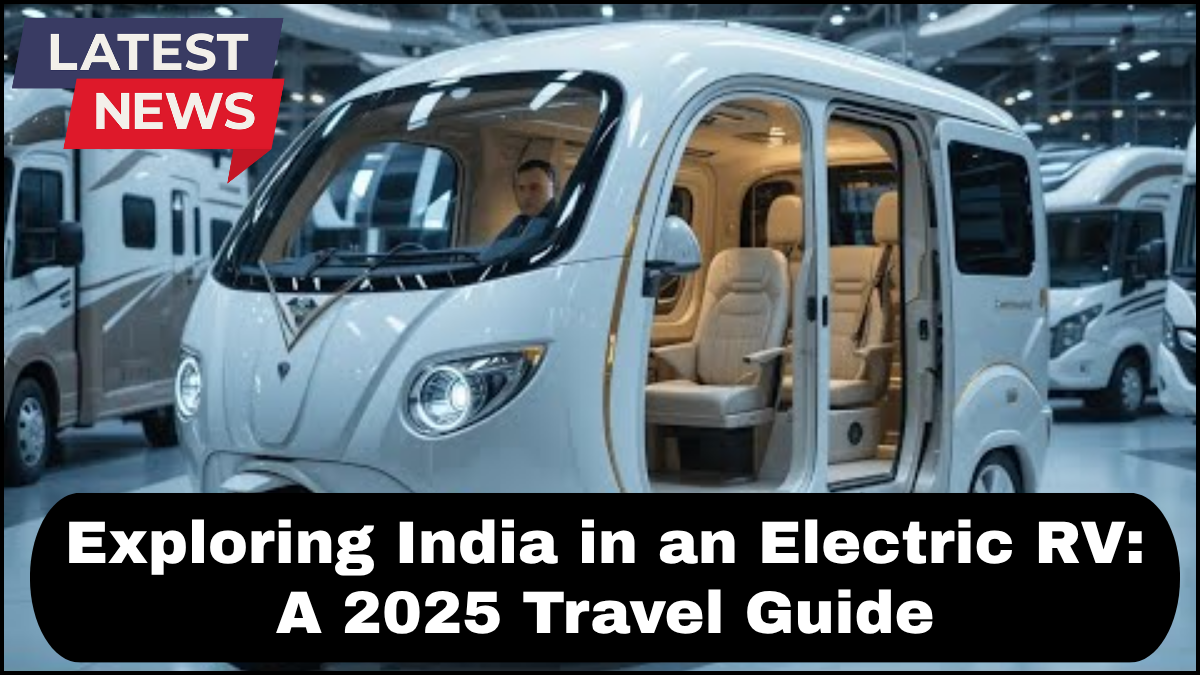As sustainable travel gains momentum, Electric RV travel in India is rapidly emerging as a bold, eco-conscious way to explore the country. With vast, diverse landscapes—from the Himalayan foothills to the coastal plains—India offers an exhilarating backdrop for electric RV adventurers. In 2025, advances in EV infrastructure, supportive government policies, and a growing community of road-trippers make this the perfect time to take your journey off-grid and on the road.
Here’s a deep dive into everything you need to know for your electric RV expedition across India, from charging logistics to prime camping spots.

Why Choose Electric RV Travel in India?
Switching to an electric RV (ERV) isn’t just about reducing carbon emissions—it’s about embracing a smarter, more immersive way to see the country. India’s traffic-dense cities and serene rural backroads both pose challenges and opportunities uniquely suited to EVs.
Key benefits include:
-
Eco-friendly travel with zero tailpipe emissions.
-
Lower fuel costs compared to diesel-powered RVs.
-
Access to nature through road camping in remote, beautiful locations.
-
Reduced noise pollution, enhancing the tranquility of your journey.
Additionally, electric RVs are now designed with longer battery life, better solar integration, and smart navigation systems that factor in real-time charging station data.
Planning Your Route: Charging Infrastructure in 2025
The success of any ERV journey hinges on your ability to stay charged. Fortunately, 2025 brings robust developments in India’s EV ecosystem.
Charging station network highlights:
-
National Highways: Equipped with fast-charging stations approximately every 100–120 km.
-
State EV corridors: Maharashtra, Tamil Nadu, and Karnataka have built dedicated EV travel routes.
-
Rural hubs: Solar-powered charging stations are expanding into smaller towns, particularly in Himachal Pradesh, Uttarakhand, and Kerala.
Use mobile apps like RevoltMap, PlugIndia, or Tata Power EZ Charge to track and reserve charging slots en route.
Best Routes for Electric RV Travel in India
Here are a few handpicked routes ideal for electric RV travel, combining reliable infrastructure with unforgettable scenery.
1. Golden Triangle (Delhi – Agra – Jaipur)
Well-developed roads, regular EV charging stops, and a blend of historical grandeur make this a beginner-friendly route.
2. Western Ghats Explorer (Mumbai – Goa – Mangalore – Coorg)
Lush hills, spice plantations, and coastal stretches. Charging points are available at major tourist towns and eco-resorts.
3. Himalayan Circuit (Chandigarh – Shimla – Manali – Leh)
Advanced, but rewarding. Solar EV stations in Spiti and Leh are now operational during the summer months. This route offers pristine opportunities for road camping under the stars.
4. East Coast Discovery (Chennai – Pondicherry – Puri – Kolkata)
This stretch has seen massive upgrades in EV infrastructure, especially around eco-tourism zones.
Road Camping in India: Where and How
Road camping in India is becoming more accepted and accessible thanks to the rise in eco-tourism and EV-friendly resorts.
Top road camping spots include:
-
Tso Moriri Lake, Ladakh – Remote and otherworldly, accessible in summer with solar charging facilities nearby.
-
Wayanad, Kerala – Jungle-clearings near tea plantations now offer plug-in options for ERVs.
-
Jaisalmer Desert Camps, Rajasthan – Several sites now support electric RV hook-ups for overnight stays.
For safety and convenience, use designated camping grounds or partner with EV-friendly farmstays, which are popping up across rural India.
Legal & Safety Essentials for ERV Travel
Before hitting the road, make sure to:
-
Carry valid insurance and pollution clearance (yes, even for EVs).
-
Obtain camping permissions if staying overnight in forest or restricted zones.
-
Keep a backup power bank or solar panel kit in case of emergency.
India’s Motor Vehicles Act recognizes electric RVs under the standard light motor vehicle category, making licensing and registration straightforward.
What to Pack in an Electric RV
-
Level 1 and Level 2 chargers
-
Portable solar panels
-
Spare EV adapters and cords
-
Offline maps (not all areas have cell coverage)
-
Essential spares and tools
Also, stock up on locally sourced dry rations and water—India’s remote highways may not always offer convenient refueling for your pantry.
Final Thoughts
Electric RV travel in India in 2025 is no longer a niche idea—it’s an attainable, meaningful way to experience the country. With strategic planning, the right vehicle, and a sense of adventure, your road trip can be both environmentally responsible and unforgettable. Whether you’re hugging coastlines, scaling mountain passes, or camping beneath a canopy of stars, India is ready to meet your wheels with open roads.
FAQs
Q1: Is it safe to road camp in India with an electric RV?
Yes, but choose designated camping sites or trusted private properties. Always inform local authorities if you’re stopping in remote areas.
Q2: Are electric RVs suitable for mountain travel in India?
Yes, many newer ERVs have powerful torque and regenerative braking ideal for hilly terrain. Just plan for charging stops carefully.
Q3: How much does it cost to charge an electric RV in India?
Prices vary by station, but fast-charging typically costs ₹18–₹25 per kWh. Many eco-lodges offer free or discounted charging for guests.
Q4: Can I rent an electric RV in India?
Yes. Companies like LithionDrive, Motorhome Adventures, and BluSmart are beginning to offer rental services for ERVs in metro hubs.
Q5: What’s the average range of an electric RV on Indian roads?
Most modern ERVs offer a range of 250–400 km per full charge, depending on terrain, load, and driving style.
click here to learn more